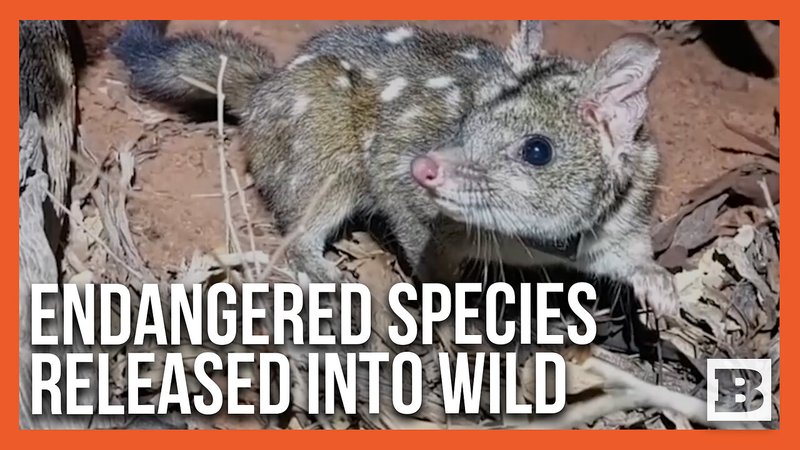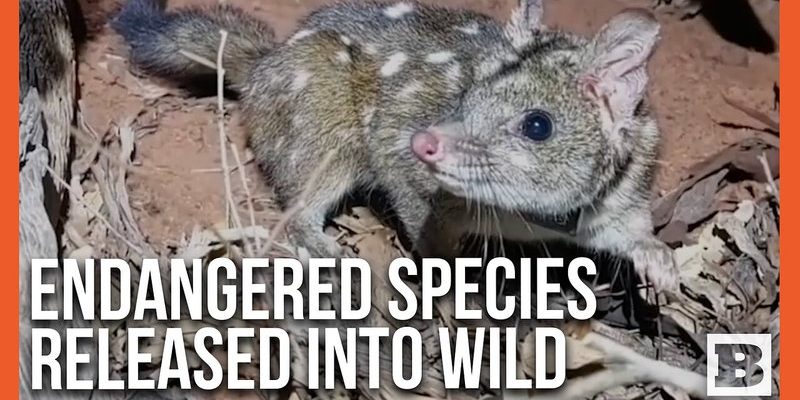
Let’s dive into the world of quolls and explore their status as endangered species. We’ll look at the various types of quolls, their habitats, the issues they face, and what’s being done to protect them. Grab a cup of coffee, and let’s explore this together!
What Are Quolls? A Quick Overview
Quolls are small to medium-sized marsupials, native to Australia and New Guinea. They come in four species: the eastern quoll, the western quoll, the northern quoll, and the spotted-tailed quoll. Picture a mix between a small dog and a fluffy cat, with a sprinkle of spots or stripes—each species has its unique flair.
These little critters typically weigh between 1 and 14 pounds, depending on their type. Quolls are nocturnal predators, meaning they’re most active at night. They have sharp teeth and claws, perfect for hunting insects, small mammals, and even birds. Imagine a tiny yet fierce hunter prowling through the brush—it’s quite the image!
You might be wondering why these marsupials aren’t as famous as their kangaroo cousins. Unfortunately, their quiet nature, combined with their dwindling numbers, means they don’t get much attention. That’s part of why understanding their conservation status is so important.
Are Quolls Endangered? The Current Status
So, are quolls endangered? The short answer is yes, but let’s unpack that a bit. Most quoll species are facing various levels of threat. The northern quoll, for instance, is listed as endangered, while the eastern quoll has seen a significant decline and is now considered vulnerable.
Conservationists are worried about these species for several reasons. Habitat loss due to urban development, agriculture, and mining has put a tremendous strain on their populations. These adorable marsupials need places to roam, hunt, and live, and when their habitats disappear, their numbers drop.
In addition to habitat loss, quolls face threats from invasive species like cats and foxes. These predators can easily outcompete or prey on quolls, leading to further declines. Honestly, it’s a tough world out there for quolls, and understanding their plight is the first step toward helping them.
The Role of Habitat in Quoll Survival
Habitat is crucial for quolls—think of it as their home sweet home. Quolls thrive in various environments, from rainforests to dry woodlands, as long as they have enough shelter and food. Unfortunately, as human activity continues to escalate, many of these habitats are shrinking.
For example, the eastern quoll prefers open forests and grasslands, where it can hunt for its favorite meals. However, as these areas are turned into farmland or developed for housing, quolls lose their hunting grounds. Without a home, their chances of survival plummet.
Efforts to protect and restore these habitats are underway. Conservation teams are working tirelessly to create wildlife corridors that connect fragmented habitats, allowing quolls to move freely and safely. It’s like building bridges for these little creatures—that’s how much they matter!
Threats to Quoll Populations
Understanding the threats facing quolls helps us devise effective conservation strategies. Invasive species are a significant concern. Cats and foxes, introduced to Australia, are particularly dangerous for quolls. Imagine a neighborhood bully who steals lunch money—that’s what these predators do to quolls.
In addition to predators, loss of food sources also plays a role. As habitats change, the availability of natural prey can dwindle. Quolls rely on a healthy population of insects and small mammals to survive, so when those populations decline, quolls struggle.
Lastly, climate change is impacting their habitats too. Changes in weather patterns can alter the availability of food and suitable shelter. As temperatures rise and rainfall patterns shift, the delicate balance of quoll habitats begins to break down. It’s a complex issue, but every little bit counts!
Conservation Efforts: What’s Being Done?
Here’s the thing: people care about quolls, and there are many conservation efforts in place aimed at protecting these adorable marsupials. Organizations and governments are putting their heads together to create plans that can help stabilize and possibly increase quoll populations.
One successful approach is breeding programs. These initiatives aim to increase the numbers of endangered quolls in controlled environments before releasing them into the wild. Think of it like a nursery school—getting them ready for the big, wide world.
Moreover, habitat restoration projects focus on repairing damaged areas. This might involve reintroducing native plants and animals, controlling invasive species, or simply protecting certain locations from development. Every step taken helps create a safer environment for quolls to thrive.
Education also plays a key role. By raising awareness about quolls and their struggles, conservation groups hope to inspire local communities to take action and support wildlife-friendly practices. When people recognize their importance, they’re more likely to help protect them.
How You Can Help Quolls
Feeling inspired to help quolls? Good! There are several ways you can make a difference, even from afar. Here are a few simple actions:
- Support Conservation Organizations: Donate to or volunteer with groups dedicated to wildlife conservation, especially those focused on quolls.
- Adopt Sustainable Practices: Reduce your carbon footprint by using less plastic, recycling, and conserving water. It may seem small, but every little bit helps!
- Spread the Word: Share what you’ve learned about quolls with friends and family. The more people know, the more they can help.
- Advocate for Wildlife Protection: Join local campaigns that work towards protecting habitats and wildlife. Your voice matters!
By taking these steps, you can contribute to a brighter future for quolls and other endangered species. Remember, every action counts!
The Future of Quolls: Hope on the Horizon
While the challenges quolls face are daunting, there’s always hope. Conservation efforts are growing, and awareness is spreading. As people become more educated about the environment and the species that inhabit it, real change can happen.
Working together, we can create a future where quolls can thrive once again. It might take time, but with persistence and care, we can make a difference. Just think about it: envision a world where quolls are frolicking freely in the wild, just like they did before.
As we wrap up this conversation about quolls and their endangered status, remember that every creature plays a role in our ecosystem. By protecting them, we help create a balanced and healthy environment for all living beings.
In the end, it’s all about connection—connection to nature, to wildlife, and to each other. So let’s keep the conversation going, get involved, and work together to protect our planet’s incredible biodiversity, starting with our furry friend, the quoll.

